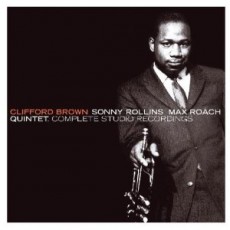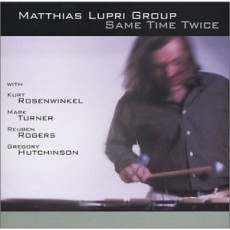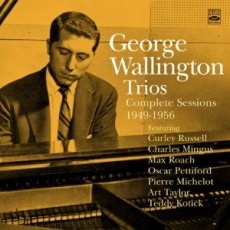
Daily Dose Of Jazz…
Ethel Waters was born in Chester, Pennsylvania on October 31, 1896 as a result of the rape of her teenaged mother, Louise Anderson by pianist and family acquaintance John Waters. Raised in poverty and never living in the same place for more than 15 months she had a difficult childhood.
Waters grew tall, standing 5’9½” in her teens, married at the age of 13, but soon left her abusive husband and became a maid in a Philadelphia hotel working for $4.75 per week. On her 17th birthday, she attended a costume party at a nightclub on Juniper Street and persuaded to sing two songs, she impressed the audience so much that she was offered professional work at the Lincoln Theatre in Baltimore, Maryland.
After Baltimore, Ethel toured on the black vaudeville circuit but success fell on hard times and she joined a carnival. Leaving that life in Chicago she headed to Atlanta, working the same clubs with Bessie Smith, singing ballads and popular songs instead of blues. But fame found her after her move to Harlem and its renaissance in the 1920s. She landed her first club gig in Harlem at Edmond’s Cellar, became an actress in the blackface comedy “Hello 1919”, and in 1921 became the fifth black woman to make a record, on the tiny Cardinal Records label. She later joined the Black Swan Record label where Fletcher Henderson was her accompanist.
She recorded for numerous labels over her career, played untold clubs and tours throughout the U.S. introducing standards like Dinah, Sweet Georgia Brown, Am I Blue and Black and Blue and worked with Duke Ellington. Film wooed her in 1933 with Rufus Jones for President featuring child star Sammy Davis Jr. in the title role. She went on to star at the Cotton Club singing Stormy Weather, had a featured role in the wildly successful Irving Berlin Broadway musical revue As Thousands Cheer in 1933, where she was the first black woman in an otherwise white show introducing Heat Wave and Supper Time to the world and was the highest paid performer on Broadway. In 1942 she starred in the Vincent Minnelli directed success Cabin In The Sky, reprising her 1940 stage role as Petunia.
Ethel Waters has three songs in the Grammy Hall of Fame, her version of Stormy Weather is on the Library of Congress’ National Recording Registry, was nominated for an Emmy for her performance in Route 66, was the second Black woman to be nominated for an Oscar for her role in Pinky, has a star approved but not funded on the Hollywood Walk of Fame, has written two autobiographies – His Eye is on the Sparrow and To Me, It’s Wonderful. The blues, jazz and gospel vocalist and actress passed away on September 1, 1977, aged 80, from uterine cancer, kidney failure, and other ailments in Chatsworth, California.
More Posts: vocal

Daily Dose Of Jazz…
Clifford Brown was born on October 30, 1930 into a musical family in Wilmington, Delaware. Organized into a vocal quartet with three of his youngest brothers buy his father, by age ten he started playing trumpet at school after becoming fascinated with the shiny trumpet his father owned. By age thirteen, he had his own trumpet and was taking private lessons.
Junior year in high school he received lessons from Boysie Lowrey, played in a jazz group that Lowery put together, made trips into Philadelphia while earning a good education from Howard High. He briefly attended Delaware State University as a math major, before switching to Maryland State College that had a more vibrant musical environment. He played in the fourteen-piece, jazz-oriented, Maryland State Band.
In June of 1950, he was seriously injured in a car accident and during his yearlong hospitalization Dizzy Gillespie visited the young trumpeter and pushed him to pursue his musical career. Limited to the piano for months due to his injuries Clifford never fully recovered and would routinely dislocate his shoulder for the rest of his life. However, he quickly became one of the most highly regarded trumpeters in jazz.
Brownie, as he was affectionately called had a sound that was warm and round, and notably consistent across the full range of the instrument. He could articulate every note, even at very fast tempos which seemed to present no difficulty to him; serving to enhance the impression of his speed of execution. He had a highly developed sense of harmony, delivered bold statements through complex chord changes of bebop harmony and fully expressed himself in a ballad.
He performed and recorded with Chris Powell, Tadd Dameron, Lionel Hampton and Art Blakey before forming his own group with Max Roach. The Clifford Brown & Max Roach Quintet was a high water mark of the hard bop style with pianist Richie Powell, tenor saxophonist Harold Land, Teddy Edwards and Sonny Rollins throughout the tenure of the group.
Clifford never touched drugs and had no fondness for alcohol, however his clean living would not save him from his tragic death on the rainy night of June 26, 1956 due to an auto accident on the Pennsylvania Turnpike. That night band member Richie Powell and his wife Nancy would also lose their lives.
At age 25 trumpeter Clifford Brown would leave behind only four years of recordings, nonetheless, he influenced later jazz trumpet players like Donald Byrd, Woody Shaw, Lee Morgan, Booker Little, Freddie Hubbard, Valery Ponomarev, Wynton Marsalis and many others. His compositions “Joy Spring” and “Daahoud” are jazz standards. He won the Down Beat critics’ poll for the “New Star of the Year” in 1954; and was inducted into the Down Beat “Jazz Hall of Fame” in 1972 in the critics’ poll.
More Posts: trumpet

Daily Dose Of Jazz…
Matthias Lupri was born Matthias Albrecht Lupri on October 29, 1964 in Germany but grew up in Manhattan, Kansas and Alberta, Canada. Initially he played the drums, playing in blues, rock and country music bands as a teenager. In his early 20’s he studied music at Mount Royal College, where he heard Gary Burton’s recordings and became interested in jazz vibraphone music.
Lupri practiced the instrument for the next five years while on the road with rock bands as a drummer, and then enrolled at Berklee College of Music to study with Burton himself.
After graduating Matthias easily slid into the jazz circles in the U.S. and around the world. He has performed and recorded with Greg Osby, Chris Potter, Kurt Rosenwinkel, Mark Turner, Greg Hutchinson, Reuben Rogers, Rick Margitza and George Garzone among others and has been sought after on the national and international jazz festival circuit.
Vibraphonist Matthias Lupri’s has released six recordings as a leader that have charted in radio’s Top 40 Gavin, CMJ and Chart Magazine Canada, has been heard on the television show “Alias”, and was named as a rising artist on vibraphone twice in the Down Beat critics poll. He continues to perform, collaborate, record and tour.
More Posts: vibraphone

Daily Dose Of Jazz…
Cleo Laine was born Clementina Dinah Campbell on October 28, 1927 in Southall, Middlesex, England of mixed heritage to a black Jamaican father and white English mother. She began taking singing and dancing lessons at an early age and attended the Featherstone Primary School. Prior to her singing career she worked as an apprentice hairdresser, librarian and for a pawnbroker, married a roof tiler and had a son, all before 1957.
Laine took up singing professionally in her mid-twenties, auditioning successfully for John Dankworth’s band, with which she performed until 1958, when she married Dankworth in secret. She began her career as a singer and actress, playing the lead in a new play at London’s Royal Court Theatre in the 50s. This propelled her into consistent theatre applause and acclaim over the next two decades.
During this period she had two major recording successes, You’ll Answer to Me, reaching the British Top 10 and Shakespeare and All that Jazz with Dankworth received widespread critical acclaim. Cleo’s international recognition started in 1972 with her first tour of Australia followed by performances in the U.S. at Lincoln Center and Carnegie Hall, and then heading to Canada with coast-to-coast tours of both countries. Television saw her on the Muppet Show, with a succession of record releases; several nominations and a Grammy win for her live Carnegie Hall 1983 concert.
In 1979 Laine was made an Officer of the Order of the British Empire (OBE) for services to music and in the 1997 New Year’s Honours list, her membership of the order was elevated to Dame Commander, and she was appointed Dame Cleo Laine DBE, the equivalent of a knighthood for women.
Singer and actress Cleo Laine is a contralto with a three-octave range and is the only female performer to have received Grammy nominations in the jazz, popular and classical music categories. She has published a self-titled autobiography Cleo in 1994 followed up with You Can Sing If You Want To in 1997. She has recorded over a hundred albums, received several honorary doctorates, fellowships and awards, has had a street named after her and at 85 years of age the longevity of her voice has been almost unchanged from decades earlier.
More Posts: vocal

Daily Dose Of Jazz…
George Wallington was born Giacinto Figlia on October 27, 1924 in Palermo, Italy but his family moved to the United States in 1925. He didn’t arrive on the New York scene until the 40s at around 18 years old, but from 1943 to 1953 he played with Joe Marsala, Charlie Parker, Serge Chaloff, Allan Eager, Kai Winding, Terry Gibbs, Brew Moore, Al Cohn, Gerry Mulligan, Zoot Sims, Red Rodney and Lionel Hampton.
He was Dizzy Gillespie’s pianist in his first bop band at the Onyx club in 1944, where his contributions reflected his innate creative ability, a talent that established him as one of the best composers in the progressive field. His astonishing, fast-moving eloquence as a pianist, contrasted strangely with his introvert, laconic manner as a person.
Wallington recorded as a leader for Savoy and Blue Note and led groups in New York that included newcomers Donald Byrd, Jackie McLean and Phil Woods from 1954 to 1960. He would record with these groups for Prestige and Atlantic record labels. In 1960 he retired to work in the family business, but returned to music in 1984 and recording three albums. His style is often compared to the legendary Earl “Bud” Powell.
George’s best known compositions are the bop standards “Lemon Drop” and “Godchild”, he sat in on the recording of Lady Fair on the Verve release Metronome All-Stars 1956 and was closely associated with the progressive jazz movement in Harlem and on 52nd Street during the 1940s.
Bop pianist, arranger and composer George Wallington, one of the first bop pianists alongside Al Haig and Bud Powell, passed away in Cape Coral, Miami, Florida on February 15, 1993. He left a ten record discography as a leader with several more as a sideman.
More Posts: piano






